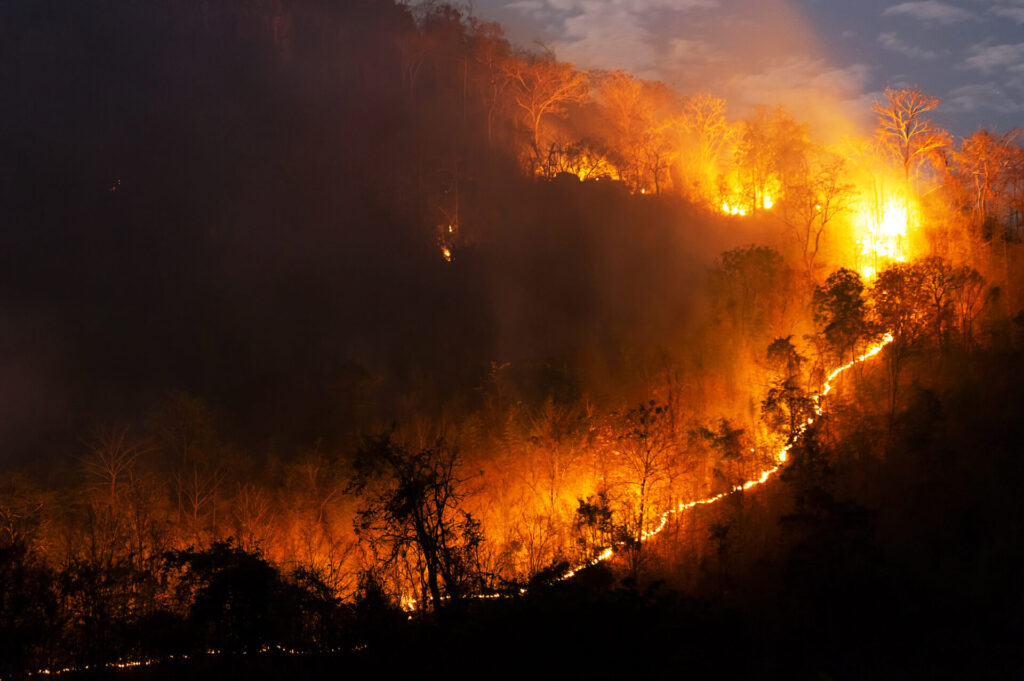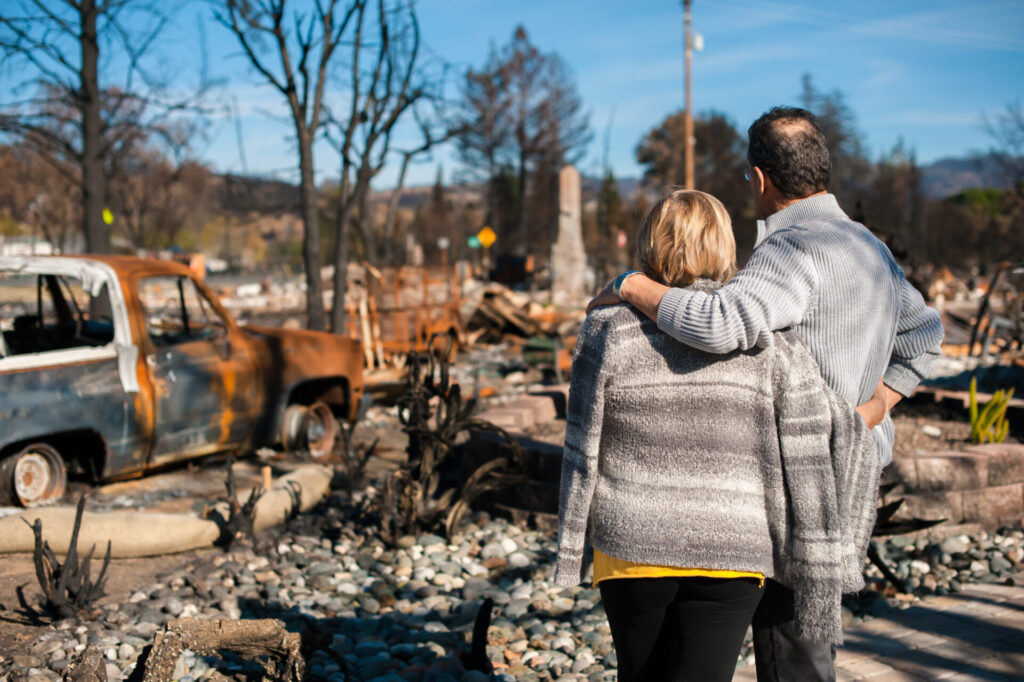Bushfires can destroy buildings and infrastructure through direct flame, intense radiant heat or ember attack. Grass fires are also a potential risk but are not currently covered by Climate Valuation’s analysis.
Wildfires can destroy buildings and infrastructure through direct flame, intense radiant heat or ember attack. Grass fires are also a potential risk but are not currently covered by Climate Valuation’s analysis.
One of the clearest findings of climate science is that global warming amplifies the intensity, duration and frequency of heat waves, drought, and bushfires.
Our planet's atmosphere and oceans are heating up ten times faster than anytime in the last 65 million years, leading to more extreme heat days.
A warmer atmosphere draws more water from the soil, increasing the likelihood for drought conditions in some regions which increases the probability of fire ignition.
Climate change has an impact on wind speeds. In less than a decade, the global average wind speed has increased from about 7 mph to about 7.4 mph. Stronger winds create conditions for fires to burn hotter and faster.
One of the clearest findings of climate science is that global warming amplifies the intensity, duration and frequency of heat waves, drought, and wildfires.
Our planet's atmosphere and oceans are heating up ten times faster than anytime in the last 65 million years, leading to more extreme heat days.
A warmer atmosphere draws more water from the soil, increasing the likelihood for drought conditions in some regions which increases the probability of fire ignition.
Climate change has an impact on wind speeds. In less than a decade, the global average wind speed has increased from about 7 mph to about 7.4 mph. Stronger winds create conditions for fires to burn hotter and faster.
Learn more about how climate change is expected to impact New Zealand property.
Learn more about how climate change is expected to impact Australian property.
Learn more about how climate change is expected to impact property in America.
Learn more about how climate change is expected to impact property in Europe.
Learn more about how climate change is expected to impact property in Canada.
The driving parameters of bushfires are temperature, humidity, wind speeds and forest fire-prone land. The bushfire hazard layers in the Climate Risk Engines use satellite data in conjunction with algorithms to account for local conditions.
The driving parameters of bushfires are temperature, humidity, wind speeds and forest fire-prone land. The wildfire hazard layers in the Climate Risk Engines use satellite data in conjunction with algorithms to account for local conditions.
Tree density impacts the amount of fuel available for bushfires.
Tree density impacts the amount of fuel available for wildfires.
Hotter and dryer conditions lead to higher rates of combustion.
Wind speed has a significant effect on the spread of fires.

Learn more about how climate change is expected to impact property in the United Kindgom.
The driving parameters of wildfire are temperature, humidity, wind speeds and forest fire-prone land. The wildfire hazard layers in the Climate Risk Engines use satellite data in conjunction with algorithms to account for local conditions.
Tree density impacts the amount of fuel available for wildfires.
Hotter and dryer conditions lead to higher rates of combustion.
Wind speed has a significant effect on the spread of fires.


The exposure of a property to a bushfire is defined by the building’s construction elements (e.g. roof, walls, floor). Different materials have different combustion thresholds. Therefore properties built from fire-resistant materials such as brick or stone will have lower vulnerability to bushfire than those built with timber or plaster.
The Climate Valuation analysis takes into consideration the property’s specific design and construction materials, providing more accurate insights into its probability of combustion. Variable information that might impact a property’s vulnerability (e.g. how often the gutters of a house in a fire zone are cleaned), may not be practically available or estimable.
The exposure of a property to a bushfire is defined by the building’s construction elements (e.g. roof, walls, floor). Different materials have different combustion thresholds. Therefore properties built from fire-resistant materials such as brick or stone will have lower vulnerability to wildfire than those built with timber or plaster.
The Climate Valuation analysis takes into consideration the property’s specific design and construction materials, providing more accurate insights into its probability of combustion. Variable information that might impact a property’s vulnerability (e.g. how often the gutters of a house in a fire zone are cleaned), may not be practically available or estimable.

The exposure of a property to a wildfire is defined by the building’s construction elements (e.g. roof, walls, floor). Different materials have different combustion thresholds. Therefore properties built from fire-resistant materials such as brick or stone will have lower vulnerability to wildfire than those built with timber or plaster.
The Climate Valuation analysis takes into consideration the property’s specific design and construction materials, providing more accurate insights into its probability of combustion. Variable information that might impact a property’s vulnerability (e.g. how often the gutters of a house in a fire zone are cleaned), may not be practically available or estimable.
Find out the risks to your property with a FREE site check
< Insert search bar >
Website developed by The Marketing GP